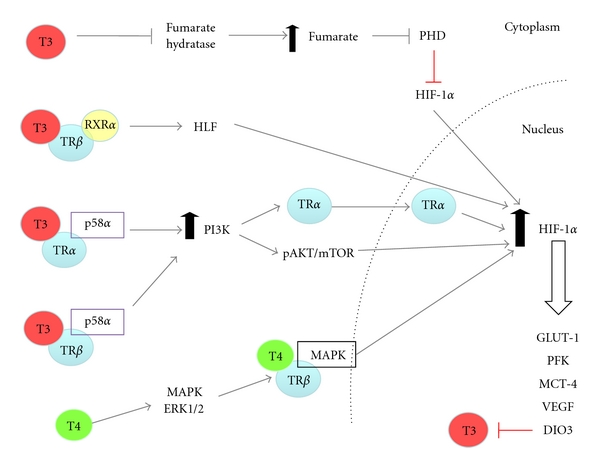Figure 4.

Thyroid hormone-dependent activation of HIF-1α: T3 and T4 induce HIF-1α activity by both genomic and nongenomic mechanisms. Genomically, T3 indirectly increases HIF-1α mRNA by increasing expression of the transcription factor hepatic leukemia factor (HLF), which initiates transcription of HIF-1α. Non-genomically, T3 stimulates PI3K signalling by promoting the interaction of both TRα and β with the PI3K regulatory subunit p85 leading to enhanced PI3K/AKT/mTOR activity and translation of HIF-1α mRNA. T3-induced PI3K promotes nuclear shuttling of TRα leading to increased HIF-1α expression. T3-induced PI3K signalling by either TRα or β is cell specific. T3 inhibits the enzyme fumarate dehydrogenase resulting in the accumulation of fumarate. Fumarate inhibits PHD2 leading to reduced hydroxylation of HIF-1α and increased protein stabilisation. T4 increases HIF-1α by stimulating MAPK signalling, leading to enhanced T4/TRβ activity and expression of HIF-1α. Activated HIF-1α by T3/T4 results in the upregulation of target genes, known to promote tumour cell survival and progression. These include GLUT-1, PFK, MCT-4, and VEGF. Additionally, HIF-1 upregulates DIO3, which inhibits T3 by catalysing the conversion of T3 to the metabolically inactive T2.
